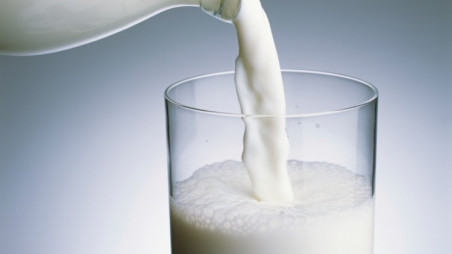Antibiotic in milk: The global response vis-à-vis ours
Only a day after Bangladesh’s finding of antibiotic, an US university also traced the same in milk produced in America

The recent discovery of antibiotic in milk by a Dhaka University professor and his team has evoked a wave of mixed reactions – strong concern by consumers and denial to the verge of castigation by the milk industry which rejected the finding.
But a second testing has also confirmed the presence of antibiotic and this is not only a Bangladesh specific problem. Today the same concern has plagued countries like America, Cyprus, Canada, New Zealand and Australia as well.
Only a day after Bangladesh’s finding of antibiotic, an US university also traced the same in milk produced in America.
The difference between them and us is however wide.
While our industry has outright rejected the finding, the authorities in the West have taken the matter seriously and applied stern measures to eliminate the risk of antibiotics in milk.
The antibiotic residues in milk are of serious public health concern as humans develop resistance to the drugs that could save lives from infections. And when you are resistant to antibiotics, a simple infection – as simple as a bruise – could kill you.
And this risk has been starkly exposed in the Dhaka University professor’s tests. Prof ABM Faroque, immediate past director of Biomedical Research Centre, and his team has found four types of antibiotics used for human in all the 10 samples of pasteurised and non-pasteurised milk they tested.
Sadly, instead of taking the finding seriously, an official of the Ministry of Fisheries and Livestock threatened legal action against the university team.
But figures are scary. A World Health Organisation (WHO) report says between 2015 and 2050, around 2.4 million people could die due to antimicrobial resistance.
According to The Centres for Disease Control and Prevention (CDC) in USA, antibiotic residues also may cause infections associated with miscarriage in pregnant patients.
In response to such concerns, the American dairy industry, however, claimed that they have curbed the antibiotic use in their dairy milk as per the limits set by FDA.
This month, a Swedish food expert claimed that antibiotics are used at a higher rate in halloumi, a cheese produced from the Cypriot dairy.
The World Wildlife Fund has warned that Cyprus feeds the most amount of antibiotics to farm animals.
However, Cypriot Agriculture Minister Costas Kadis hit back calling the claims "defamation" and said that the claim was done on the basis of reports from 2009.
In 2014, Australia was amongst the highest prescribers of antibiotics in the world. Prof Peter Collignon, at UN General Assembly on antibiotic resistance, said that a lack of transparency on antibiotic use by the Australian farming industry is undermining the efforts to prevent superbugs.
He also said, “In Australia we don’t really know which antibiotic is given for which animal and how much should be given.”
The Australian government, however, began taking it seriously in the past five years and has prescribed moderate use of antibiotics with a maximum limit.
Food can’t be sold if it contains residues above these limits.
Dairy farmers and veterinarians in New Zealand have taken an alternative model. They have reduced using long-acting antibiotics in cows. They are replacing antibiotic with alternatives such as immune modulators or vaccines to prevent the diseases.
In Canada, whether organic or conventional, milk undergoes strict milk quality production procedures and rigorous testing to ensure the highest quality milk.
If a dairy cow is on antibiotics for an illness, she is temporarily removed from the milk producing herd and her milk is discarded. Once she has recovered and the antibiotics have cleared her system, she is brought back to the herd for producing milk suitable for human consumption.
All milk is rigorously tested for antibiotic residues prior to putting it at milk processing plant. If milk contains traces of antibiotics, the milk is dumped and the producer is penalized.
However, we find none of such urgency in government reactions in our case. The Bangladesh Standards Testing Institute lacks equipment to test the full range of residues in milk.
Moreover, the companies which purchase milk from farmers have no mechanism to test milk for antibiotic presence and this should be the urgent priority.
Once companies like Pran and Aarong stop buying milk with traces of antibiotic, the farmers’ behaviour is bound to change. They may face some temporary setbacks in their business but that would yield more benefits than loss.


 Keep updated, follow The Business Standard's Google news channel
Keep updated, follow The Business Standard's Google news channel


















